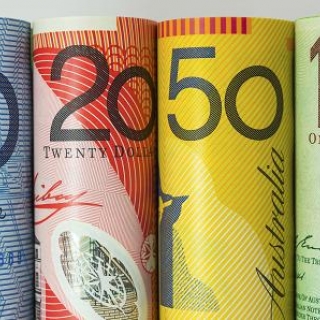


The Australian Dollar (AUD) loses ground on Wednesday for the second consecutive day. The AUD/USD pair struggles as the US Dollar (USD) extends its gains despite the United States (US) Nonfarm Payrolls Benchmark Revision, which has boosted odds that the Federal Reserve (Fed) will begin cutting interest rates as soon as next week.
The AUD/USD pair holds losses following the release of China's Consumer Price Index (CPI), which declined 0.4% year-over-year in August after arriving at 0% in July. The market consensus was for a 0.2% decline in the reported period. The monthly CPI inflation came in at 0% versus the previous 0.4% and the expected 0.1% increase.
The AUD may limit its downside as a solid July Trade Surplus, along with Q2 GDP figures and hotter July inflation, dampen expectations of additional Reserve Bank of Australia (RBA) rate cuts. Swaps are now assigning nearly an 84% probability that the RBA will keep policy unchanged in September, while the likelihood of a 25-basis-point rate cut in November has eased to 80% from 100%.
However, Matthew Hassan, Head of Australian Macro-Forecasting, noted that consumer recovery since mid-2024 has been sluggish, following a decline in Westpac Consumer Confidence to 95.4 in September from 98.5 in August. Hassan indicated that further policy easing may be required, projecting a 25-basis-point RBA rate cut in November, followed by two additional reductions in 2026.
Focus will shift toward US inflation reports that could provide more cues on Fed policy outlook. The August US Producer Price Index (PPI) is scheduled for release on Wednesday, followed by the Consumer Price Index (CPI) on Thursday.
Source: FXstreet
The Australian dollar strengthened against the US dollar on Wednesday, recouping the previous session's losses. This boost came from comments by RBA Assistant Governor Sarah Hunter: recent data appear...
The Australian dollar (AUD) strengthened to around 0.6530 against the US dollar (USD) in the Asian session on Monday, after falling more than 1% in the previous trading session. This strengthening occ...
The Australian dollar strengthened to around $0.657 on Friday (October 10), rebounding from a nearly two-week low. This gain came after RBA Governor Michele Bullock struck a cautious tone: services in...
Wednesday, October 8, 2025 - The Australian dollar weakened to around US$0.656, extending its decline as the US dollar continued to strengthen. Safe-haven demand for the greenback increased as the US ...
The Australian dollar (AUD) strengthened against the US dollar (USD) this morning after the latest inflation data from the TD Securities–Melbourne Institute (TD-MI) showed a higher-than-expected surge...
Three major US indexes closed at new record highs after a lower-than-expected inflation report raised the possibility of a Federal Reserve interest rate cut later this year and prompted investors to shift to riskier assets. The S&P 500 rose...
Oil prices fell on Friday (October 24th) as skepticism crept into the market regarding the Trump administration's commitment to sanctions against Russia's two largest oil companies related to the war in Ukraine. Brent crude futures closed 5 cents,...
Gold prices pared losses on Friday (October 24) after slightly lower-than-expected US inflation data reinforced expectations that the Federal Reserve will cut interest rates next week, but the precious metal is still expected to post its first...
 Asia-Pacific markets fell Thursday, tracking Wall Street's declines on concerns about U.S.-China trade relations.
Trade fears resurfaced after...
Asia-Pacific markets fell Thursday, tracking Wall Street's declines on concerns about U.S.-China trade relations.
Trade fears resurfaced after...
 Following the final October meeting (October 28–29, 2025), the FOMC calendar still lists December 9–10, 2025. This means the Fed could technically...
Following the final October meeting (October 28–29, 2025), the FOMC calendar still lists December 9–10, 2025. This means the Fed could technically...
 Asia-Pacific markets rose Friday, after the White House said that U.S. President Donald Trump and China's President Xi Jinping were set to hold...
Asia-Pacific markets rose Friday, after the White House said that U.S. President Donald Trump and China's President Xi Jinping were set to hold...
 The Trump administration announced on Wednesday new sanctions targeting Russia's two largest oil companies, Rosneft and Lukoil, as part of efforts...
The Trump administration announced on Wednesday new sanctions targeting Russia's two largest oil companies, Rosneft and Lukoil, as part of efforts...